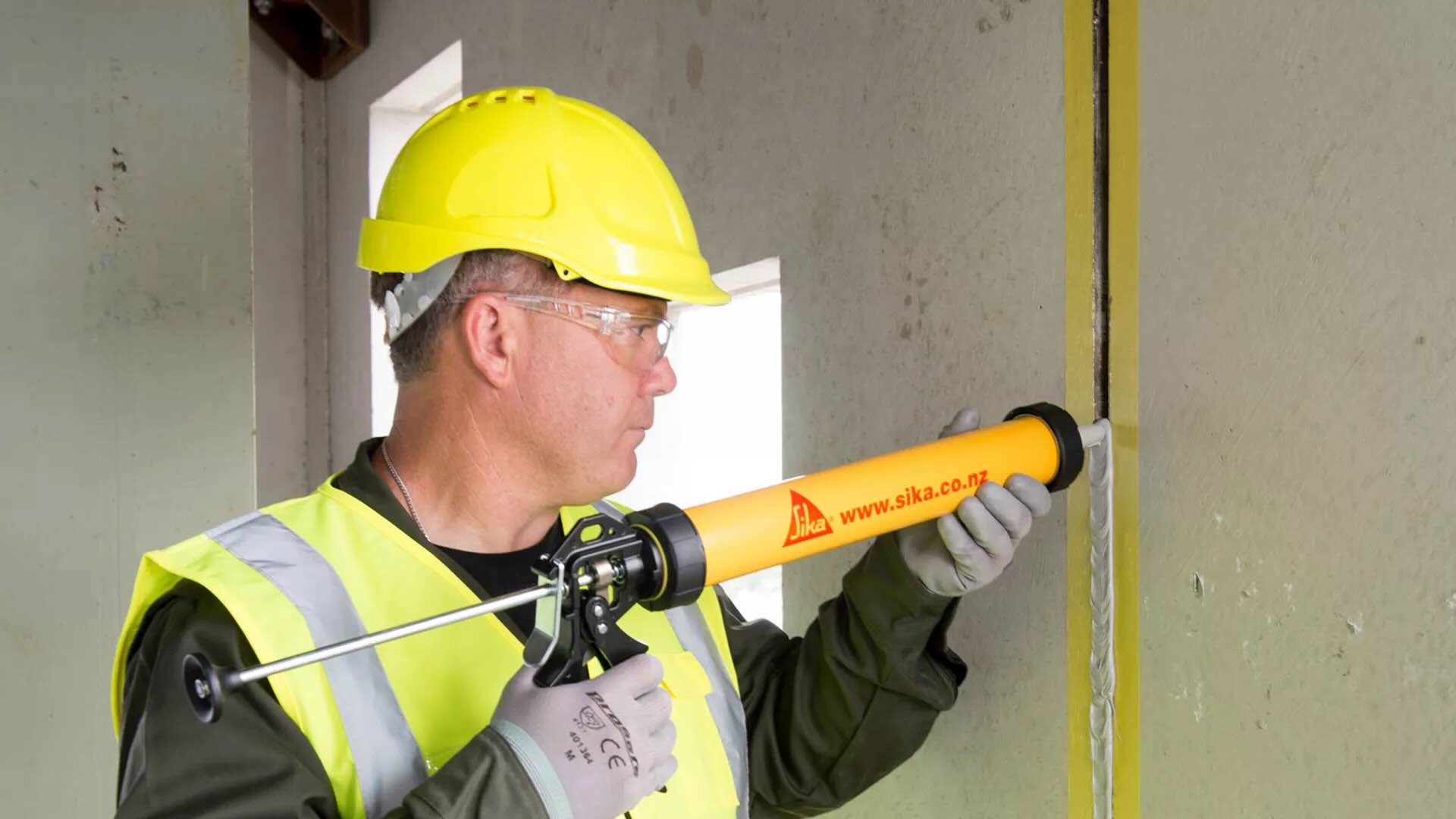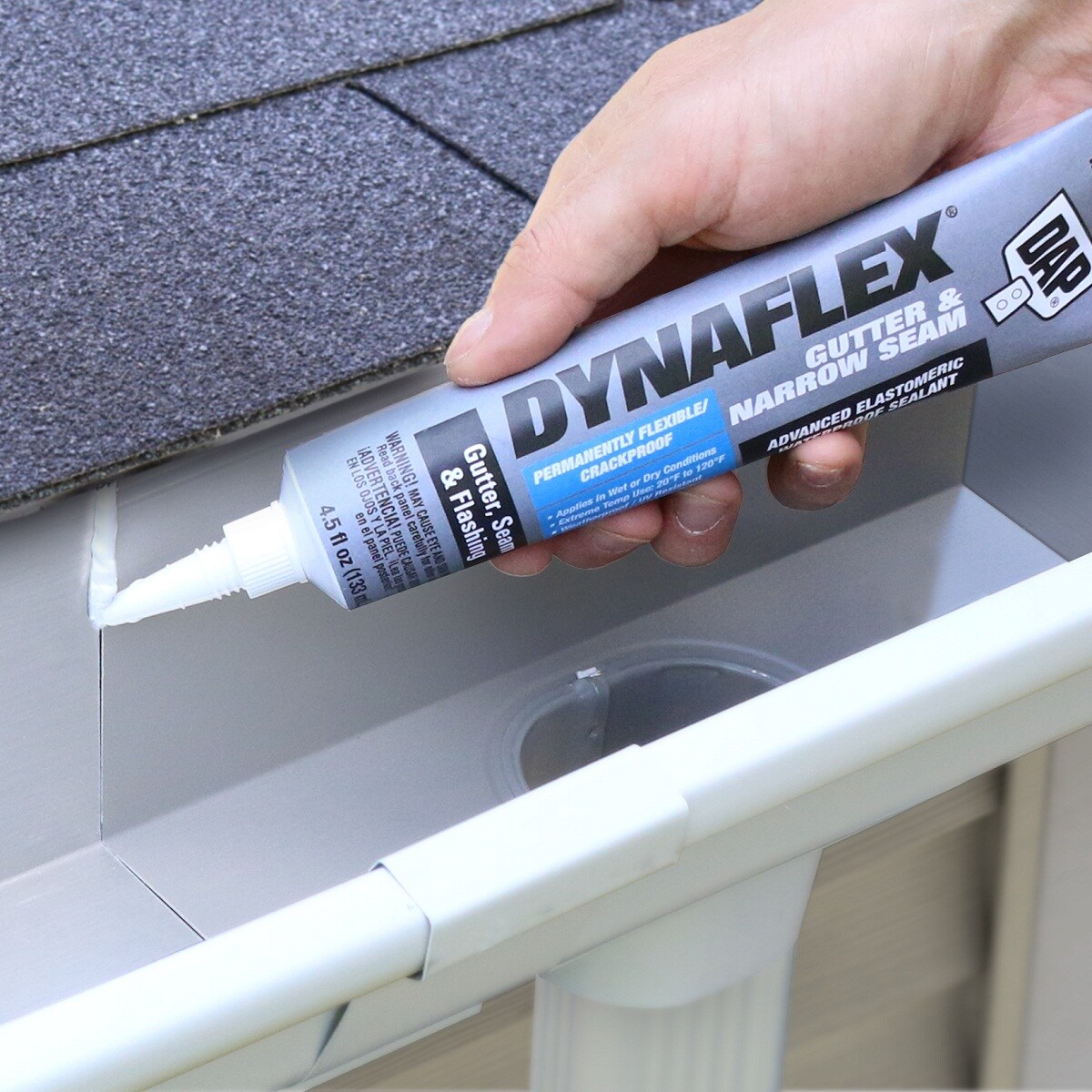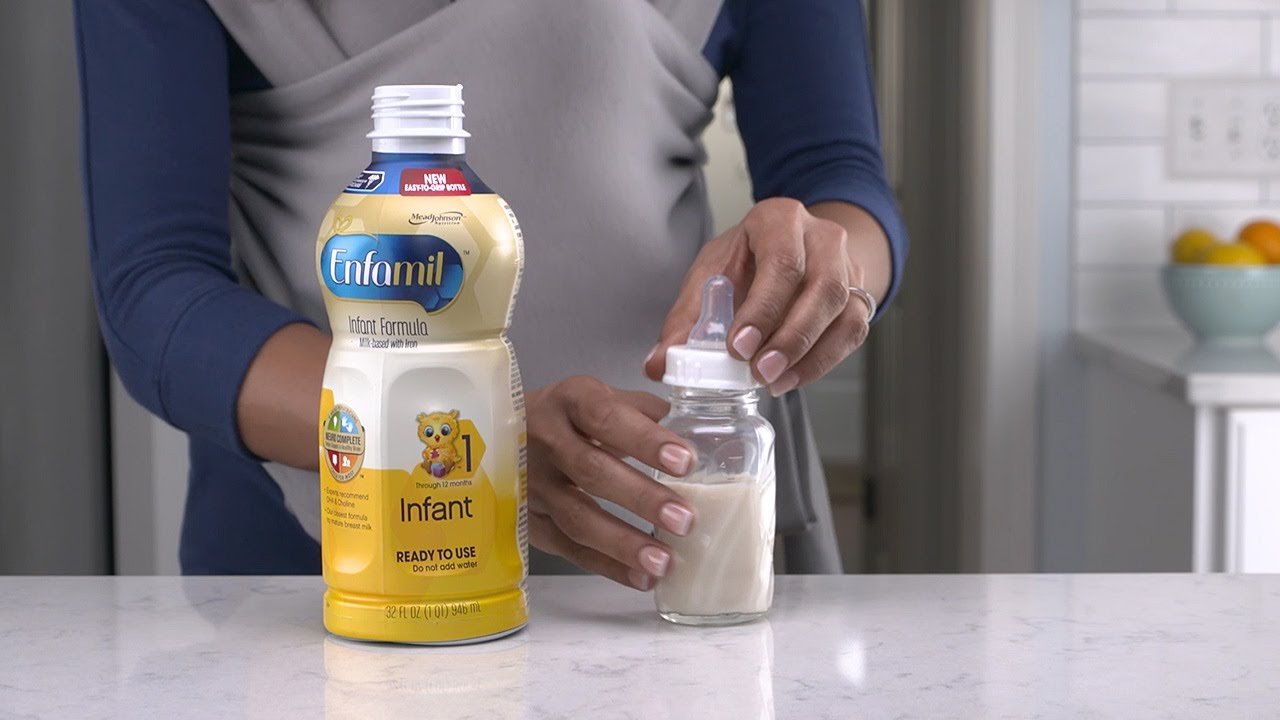Articles
How To Store Silicone Sealant After Use
Modified: December 7, 2023
Learn the best ways to store silicone sealant after use with our informative articles. Keep your sealant fresh and long-lasting for your next project.
(Many of the links in this article redirect to a specific reviewed product. Your purchase of these products through affiliate links helps to generate commission for Storables.com, at no extra cost. Learn more)
Introduction
Welcome to our comprehensive guide on how to store silicone sealant after use. If you have ever worked with silicone sealant, you know how versatile and handy it can be for various sealing and bonding applications. However, improper storage can lead to a hardened, unusable sealant, causing frustration and wasted money.
In this article, we will discuss the importance of proper storage and share practical steps to help you store your silicone sealant effectively. We will guide you through choosing the right storage area, cleaning and preparing the sealant tube, properly sealing the tube, and storing it correctly. We will also provide additional tips to ensure your silicone sealant remains in optimal condition for future use.
By following these guidelines, you can save money by prolonging the lifespan of your silicone sealant, preventing unnecessary waste, and ensuring that you always have a reliable product on hand when needed.
So, let’s dive in and learn how to properly store silicone sealant to keep it in excellent condition and ready for your next project!
Key Takeaways:
- Proper storage of silicone sealant is crucial for maintaining its effectiveness, preventing waste, and ensuring reliable performance. Follow the steps outlined to prolong the shelf life and have a reliable product on hand.
- Choosing the right storage area, cleaning and preparing the sealant tube, and properly sealing and storing it are essential steps to keep silicone sealant in excellent condition. By following these guidelines, you can save money and have a reliable product ready for your next project.
Read more: How To Store Silicone Toys
Importance of Proper Storage
Proper storage of silicone sealant is crucial for maintaining its effectiveness and extending its shelf life. When exposed to air and moisture, silicone sealant can harden inside the tube or cartridge, rendering it unusable. This not only leads to frustration when you need to use it but also means you may have to purchase new sealant unnecessarily.
By storing your silicone sealant correctly, you can avoid these common issues and ensure that your sealant remains in optimal condition for future use. Here are a few reasons why proper storage is important:
- Prolongs Shelf Life: Storing silicone sealant properly can significantly extend its shelf life. This means that you can keep the sealant for a longer period without it hardening or deteriorating, saving you money in the long run.
- Maintains Consistency: When silicone sealant is exposed to air and moisture, it can become thick and difficult to work with. By storing it properly, you can maintain its consistency, ensuring smooth and even application when you need it.
- Prevents Waste: Improperly stored silicone sealant can dry up or harden, making it unusable. This not only wastes the sealant itself but also the time and effort invested in purchasing it. By storing it properly, you can prevent unnecessary waste and save money.
- Ensures Reliable Performance: Silicone sealant that is stored properly will remain effective and reliable. Whether you are using it for sealing windows, bathrooms, or other applications, you can trust that the sealant will perform as expected, providing the necessary protection and durability.
By understanding the importance of proper storage, you can take the necessary steps to ensure that your silicone sealant remains in excellent condition and ready for use whenever you need it. In the next section, we will discuss the specific steps for storing silicone sealant after use.
Steps for Storing Silicone Sealant
Properly storing silicone sealant is a simple process that requires careful attention to a few key steps. By following these steps, you can ensure that your sealant stays in optimal condition for future use:
- Clean and Prepare the Sealant Tube: Before storing your silicone sealant, it’s essential to clean the nozzle and remove any excess sealant. Wipe the nozzle with a clean cloth or paper towel, ensuring that there are no dried sealant remnants. This will prevent clogging and make it easier for you to use the sealant when needed.
- Properly Seal the Silicone Sealant Tube: To prevent air and moisture from entering the tube and hardening the sealant, it’s important to seal the tube properly. Most silicone sealant tubes come with a cap or nozzle that can be resealed tightly. Make sure to secure the cap or nozzle firmly to create an airtight seal.
- Store the Silicone Sealant Tube Upright: Storing the silicone sealant tube in an upright position can help prevent the sealant from separating or settling inside the tube. This ensures that the sealant remains consistent and ready for use in its original form.
- Store in a Cool, Dry Place: It’s crucial to store silicone sealant in a cool and dry place, away from direct sunlight and extreme temperatures. Excessive heat or cold can affect the quality and consistency of the sealant. Find a location where the temperature remains relatively constant, such as a cool closet or a shelf in your workshop.
- Avoid Exposure to Air and Moisture: Air and moisture are the main culprits that can cause silicone sealant to harden and become unusable. Keep the sealant tube away from areas with high humidity, such as bathrooms or basements. Additionally, make sure to tightly seal the cap or nozzle after each use to minimize air exposure.
By following these steps, you can ensure that your silicone sealant is stored properly and remains in excellent condition for future use. Next, let’s discuss how to choose the right storage area for your silicone sealant.
Choosing the Right Storage Area
When it comes to storing silicone sealant, choosing the right storage area is essential for maintaining its quality and effectiveness. Here are some factors to consider when selecting the storage area for your silicone sealant:
- Temperature: It’s important to choose a storage area with a consistent temperature. Extreme heat or cold can affect the quality and consistency of the sealant. Ideally, the temperature should be between 50°F (10°C) and 77°F (25°C). Avoid storing the sealant in areas exposed to direct sunlight, such as windowsills or car dashboards.
- Humidity: Silicone sealant is sensitive to moisture and high humidity levels. It’s crucial to store the sealant in a dry environment. Avoid areas with high humidity, like basements or bathrooms, as they can cause the sealant to deteriorate more quickly. Opt for a cool, dry place such as a closet or a shelf in your workshop.
- Away from Children and Pets: Make sure to store your silicone sealant in a place that is inaccessible to children and pets. Sealants often contain chemicals that can be harmful if ingested or come into contact with skin or eyes. Choose a high shelf or a locked cabinet to ensure safety.
- Organized and Visible: Keep your storage area organized and visually accessible. This will make it easier to locate your silicone sealant when needed and prevent it from getting buried among other items. Consider using storage bins or dividers to keep different sealant types or colors separate and easy to find.
- Avoid Frequent Shaking or Movement: Silicone sealant can separate or settle if exposed to frequent shaking or movement. Choose a storage area where the sealant will not be jostled or disturbed frequently. This will help maintain the sealant’s consistency and prevent any separation.
By taking these factors into account, you can select the ideal storage area for your silicone sealant. Remember, a cool, dry, and organized space will ensure that your sealant remains in top condition for future use. In the next section, we will discuss the steps to properly clean and prepare the sealant tube before storage.
Cleaning and Preparing the Sealant Tube
Before storing your silicone sealant, it’s essential to clean and prepare the sealant tube to ensure optimal performance in the future. Here are the steps to follow:
- Inspect for Dried Sealant: Examine the nozzle and opening of the sealant tube for any dried sealant remnants. Use a clean cloth or paper towel to remove any debris or residue. This will prevent clogging and ensure smooth and even flow when you use the sealant later.
- Clear the Nozzle: Sometimes, the nozzle of the sealant tube may be partially blocked by dried sealant. Use a pin or a toothpick to gently clear the nozzle, ensuring it is free from any blockages. Carefully insert the pin or toothpick, being cautious not to damage the nozzle or puncture the tube.
- Wipe the Tube Exterior: Use a clean cloth or damp paper towel to wipe the exterior of the sealant tube. This will remove any dirt or grime that may have accumulated, ensuring a clean storage surface.
- Screw the Cap Tightly: Make sure that the cap or nozzle of the sealant tube is tightly screwed or closed. This will create an airtight seal, preventing air and moisture from entering and potentially hardening the sealant.
- Label the Tube (Optional): If you have multiple sealant tubes in your storage area, it can be helpful to label them for easy identification. Use a permanent marker to write the date of purchase or the type of sealant on the tube. This will help you keep track of the sealant’s age and contents.
By following these steps, you can ensure that your sealant tube is clean, clear, and ready for storage. Cleaning and preparing the tube before storing will prevent clogging, maintain the integrity of the sealant, and ensure that it is in optimal condition when you need it next. In the next section, we will discuss the proper method of sealing the silicone sealant tube to prevent air and moisture exposure.
Store silicone sealant in a cool, dry place away from direct sunlight and extreme temperatures. Make sure the cap is tightly sealed to prevent drying out. If possible, store the tube upside down to prevent air from entering.
Read more: How To Store Silicone Caulk
Properly Sealing the Silicone Sealant Tube
Ensuring that your silicone sealant tube is properly sealed is crucial for preventing air and moisture exposure, which can cause the sealant to harden and become unusable. Follow these steps to seal the silicone sealant tube effectively:
- Check the Cap or Nozzle: Inspect the cap or nozzle of the silicone sealant tube to ensure it is clean and in good condition. Remove any dried sealant or debris that may hinder the sealing process.
- Align the Cap or Nozzle: Make sure the cap or nozzle is aligned with the tube opening. This will ensure a secure and tight seal when closed.
- Tighten the Cap or Nozzle: Rotate the cap or nozzle clockwise to tighten it securely. Ensure that it is tightly sealed to prevent any air or moisture from entering the tube.
- Test the Seal: Gently squeeze the tube to check if the seal is intact. If you feel air escaping or notice any leaks, double-check the alignment and tightness of the cap or nozzle.
- Store in an Upright Position: Place the sealed silicone sealant tube in an upright position to prevent the sealant from settling or separating inside the tube. Storing it upright will help maintain the consistency and quality of the sealant.
It’s essential to properly seal the silicone sealant tube after each use, even if you plan to use it again in the near future. A secure seal will protect the sealant from exposure to air and moisture, ensuring that it remains fresh and usable for an extended period.
By following these steps, you can effectively seal the silicone sealant tube, minimizing the chances of air and moisture exposure. This will help preserve the quality and lifespan of the sealant for future use. In the next section, we will discuss the proper storage of the silicone sealant tube to maintain its effectiveness.
Storing the Silicone Sealant Tube
Proper storage of the silicone sealant tube is crucial for maintaining its effectiveness and preventing it from hardening or deteriorating. Follow these guidelines to store the silicone sealant tube correctly:
- Choose a Suitable Storage Area: Select a cool, dry place to store the silicone sealant tube. Avoid areas that are exposed to extreme temperatures or high humidity, as these conditions can affect the quality of the sealant. A closet or a shelf in your workshop can be ideal storage locations.
- Keep the Tube Upright: Store the silicone sealant tube in an upright position. This prevents the sealant from separating or settling within the tube, ensuring that it remains consistent and ready for use whenever needed.
- Avoid Direct Sunlight: Exposure to direct sunlight can cause the sealant to deteriorate quickly. Store the sealant tube in a location where it’s shielded from direct sunlight, such as inside a cabinet or a drawer.
- Keep Away from Moisture: Moisture is one of the main culprits that can cause the silicone sealant to harden. Store the sealant tube in a dry area, away from water sources or areas with high humidity, like bathrooms or basements.
- Organize and Protect: Keep your storage area organized by designating a specific spot for the silicone sealant tube. Consider using storage bins or dividers to keep it separate from other items and protect it from accidental damage.
- Regularly Check for Damage: Periodically inspect the sealant tube for any signs of damage, such as cracks or leaks. If you notice any damage, it is best to replace the tube to ensure the sealant remains viable and effective.
By following these storage guidelines, you can maintain the quality and effectiveness of the silicone sealant tube. Proper storage ensures that the sealant remains in optimal condition, ready to be used for various sealing and bonding applications.
Remember to always check the expiration date on the sealant tube, as silicone sealants do have a shelf life. If the sealant has reached its expiration date, it is recommended to dispose of it properly and replace it with a fresh tube.
In the next section, we will provide some additional tips to help you with the proper storage of silicone sealant.
Additional Tips for Proper Storage
Here are some additional tips to ensure the proper storage of silicone sealant:
- Maintain a First-In-First-Out (FIFO) System: If you have multiple tubes of silicone sealant, apply the “first-in-first-out” principle. Use the older tubes before opening the newer ones. This helps prevent any unused tubes from sitting in storage for an extended period, which can lead to potential degradation.
- Avoid Freezing the Sealant: Do not expose silicone sealant to freezing temperatures. Freezing can negatively affect its consistency and performance. If the temperature drops below freezing in your storage area, consider moving the sealant to a more suitable location.
- Secure Loose Nozzles: If you remove the nozzle for a specific application, make sure to secure it tightly when storing the tube. This prevents air and moisture from entering the tube and compromising the quality of the sealant.
- Label the Storage Area: To easily locate your silicone sealant, consider labeling the storage area with a visible sign or a designated label. This will save you time and effort when searching for the sealant during your next project.
- Store Opened Tubes Upside Down: If you have opened a tube of silicone sealant and plan to use it again soon, storing it upside down can help prevent the nozzle from clogging. Just make sure to securely seal the nozzle before flipping the tube.
By implementing these additional tips, you can optimize the storage of your silicone sealant, ensuring its longevity and usability.
Remember, proper storage is key to maintaining the quality and effectiveness of silicone sealant. By following the steps and tips outlined in this guide, you can prolong the lifespan of your sealant, prevent unnecessary waste, and have a reliable product on hand whenever you need it.
Now that you know how to store silicone sealant after use, you can confidently organize and protect your sealant, knowing that it will be ready for your next sealing or bonding project.
Good luck and happy sealing!
Conclusion
Properly storing silicone sealant after use is essential for maintaining its effectiveness and prolonging its shelf life. By following the steps and tips outlined in this guide, you can ensure that your sealant remains in optimal condition for future use.
Remember to clean and prepare the sealant tube, seal it tightly to prevent air and moisture exposure, and store it in a cool, dry place. Choosing the right storage area, such as a closet or shelf in your workshop, is crucial for maintaining the quality of the sealant.
By storing the sealant tube upright, keeping it away from direct sunlight and moisture, and organizing your storage area, you can ensure that the sealant remains consistent and ready for use whenever you need it.
Additionally, following additional tips like implementing a first-in-first-out system, avoiding freezing the sealant, and properly securing loose nozzles will further optimize the storage process.
Proper storage not only saves you money by preventing wasted sealant but also ensures that the sealant performs reliably for your sealing and bonding needs, providing protection and durability.
Now that you have a comprehensive understanding of how to store silicone sealant, you can confidently take the necessary steps to keep your sealant in excellent condition, ready to tackle your next project with ease.
Remember, maintaining proper storage practices is essential for getting the most out of your silicone sealant and ensuring that it remains an invaluable tool in your DIY arsenal.
So, take care of your sealant, follow the guidelines in this article, and enjoy the benefits of a well-preserved and effective silicone sealant for years to come.
Frequently Asked Questions about How To Store Silicone Sealant After Use
Was this page helpful?
At Storables.com, we guarantee accurate and reliable information. Our content, validated by Expert Board Contributors, is crafted following stringent Editorial Policies. We're committed to providing you with well-researched, expert-backed insights for all your informational needs.







0 thoughts on “How To Store Silicone Sealant After Use”